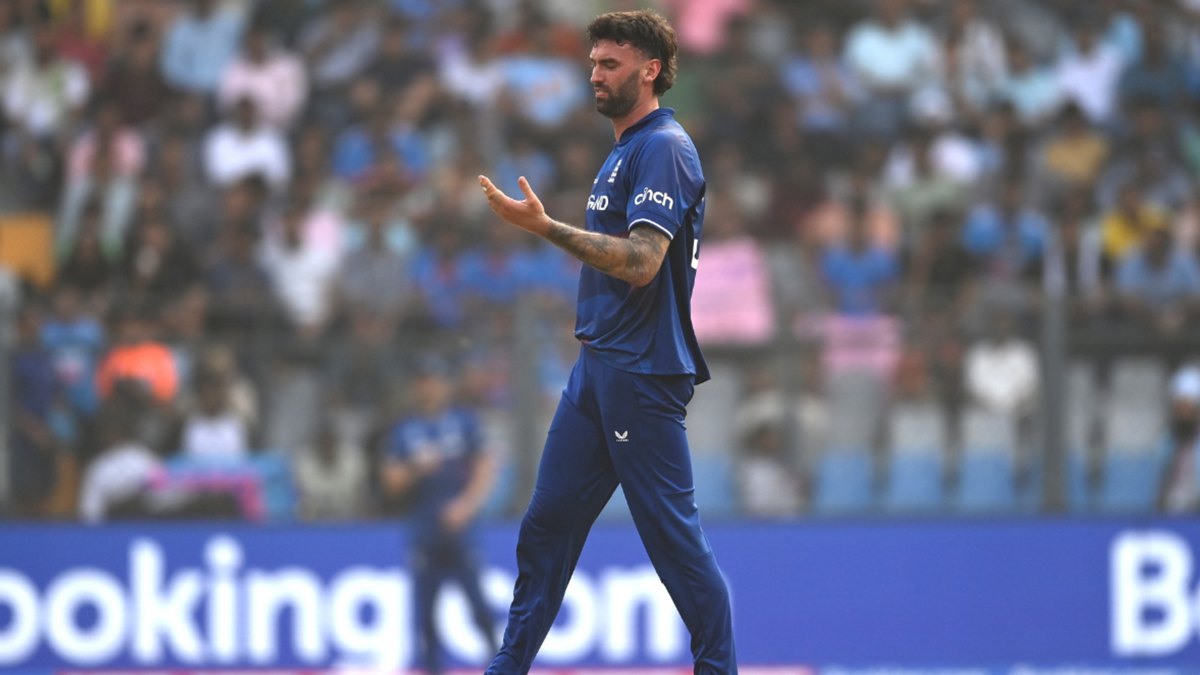
Reece Topley returned to the field with a heavily strapped left index finger after injuring his hand in the early stages of England’s match against South Africa. Here’s why he was allowed to bowl with the strapping in place.
To bet on the World Cup with our Match Centre Partners bet365 head here.
Topley was hit on the hand attempting to field a straight drive from Rassie van der Dussen in the seventh over the match. He received treatment on the field, and attempted to continue bowling before leaving the field without completing the over. Having had further treatment, he returned to the field for the latter part of the innings, with the offending finger heavily strapped.
He came back on to bowl the 35th over of the innings, and picked up a wicket with the final ball of the over. He also took a wicket in his next over, getting David Miller caught at mid off.
Under Law 28.1 “protection for the hand or fingers may be worn only with the consent of the umpires”.
While it is not uncommon to see fielders with tape on their hands to protect from injuries or not exacerbate pre-existing ones, the ICC guidance is more strict when it comes to bowlers wearing protection on their hands. Generally, bowlers are not allowed to ball with taping or coverings on their hand, fingers or wrists.
There have been several recent examples of bowlers either being prevented from bowling with, or having to removes protections during matches in order to bowl. In June 2022, during Australia’s limited overs series in Sri Lanka, Mitchell Starc did not play in the second T20I of the series, having had stitches in his left index finger after cutting it during the opening match. While he was able to bowl in practice with taping covering the wound, he would have had to remove the tape to bowl in the following game.
Similarly, Starc again suffered an injury to his bowling hand during the Boxing Day Test against South Africa last year. He was injury doubt to bowl in the third Test, with Cameron Green also suffering a blow to his bowling hand while batting, and was a similar doubt. Moeen Ali also had to bowl with a finger blister during the 2023 Ashes, and wasn’t allowed to wear a plaster.
However, while it is unusual for a bowler to bowl with strapping on their hands, it is not against any law or regulations, but is at the umpire’s discretion. It is likely that Topley sustaining the injury during the game played a part in the match officials’ leniency. While had he come into the match with strapping he would have had to remove it to bowl, because the strapping was to treat an injury picked up during the match, the umpires granted permission for it to remain in place.
Umpires do not have to grant this permission and bowlers generally regard tape on their bowling hand as a hindrance rather than a help. But in England’s case, they came into the game with five front-line bowlers, meaning if Topley could not bowl they would have had to find more overs from a part-timer. Even if the tape lessened his control, it was a better option to have Topley able to bowl those overs.
Nevertheless, England conceded 399-7 thanks to a brilliant hundred from Heinrich Klaasen. The highest total ever posted against England in men’s fifty-over World Cups.








